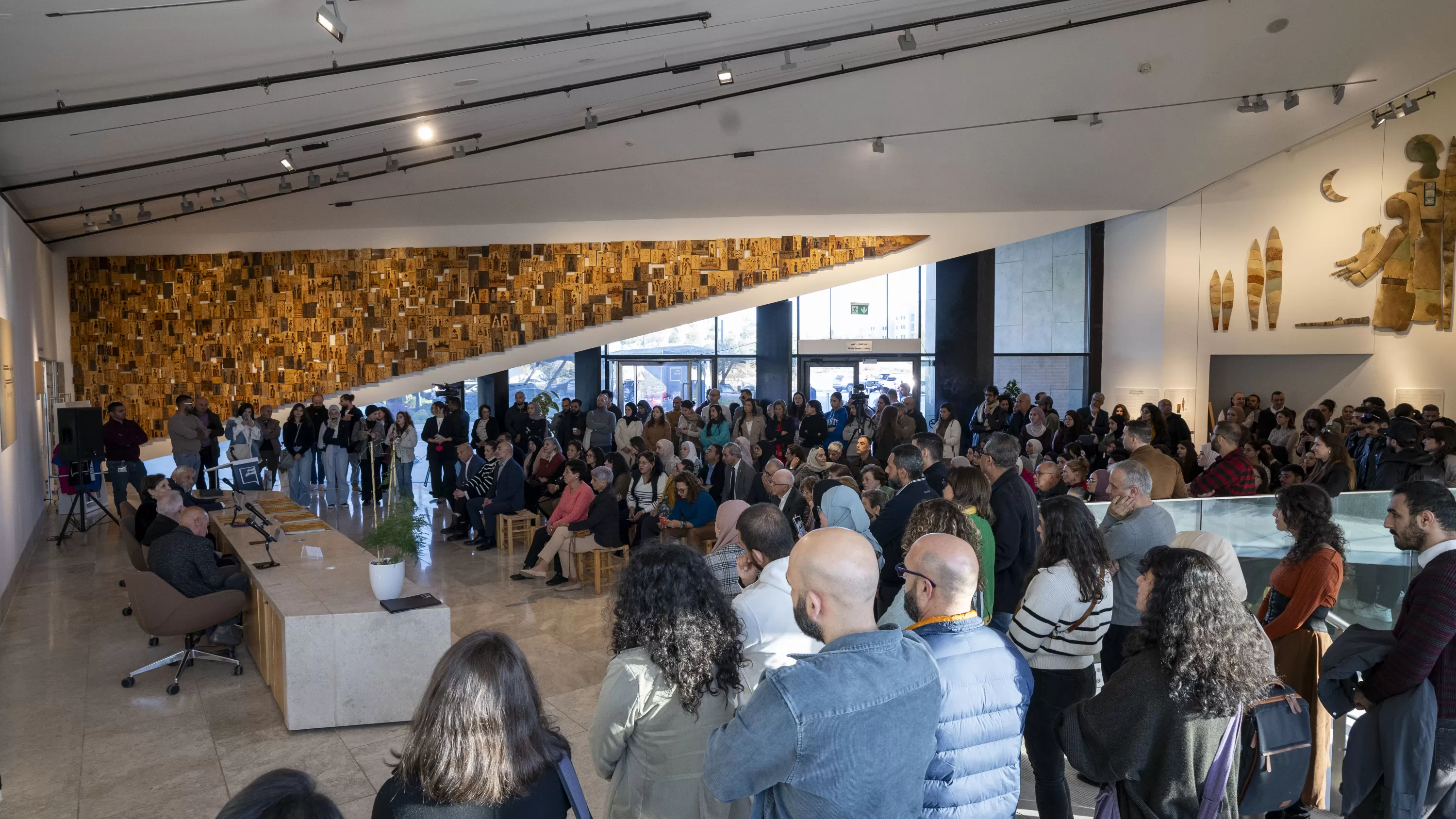
Birzeit – Palestine: As part of the artistic demonstration launched last February, and coinciding with the 37th anniversary of the glorious First Intifada, the Palestinian Museum unveils today the murals of the founding artists of the "New Visions" group: Sliman Mansour, Nabil Anani, Tayseer Barakat, and Vera Tamari. These works are created to serve as the nucleus for the Palestinian Museum's permanent exhibition, remaining on its walls as a tribute to the artists who led a renewal movement forward, drawing from the immense heritage of their people.
The "New Visions" group was established during the First Palestinian Intifada in 1989, in a context where everything aspired to freedom. During that critical and epic time, the four artists united at the height of the uprising, choosing to speak the language of the masses. They utilized natural Palestinian materials in their artworks, responding to the Intifada's call to boycott Israeli products. The artists embarked on an ""an aesthetic quest to elevate artistic vision to a level that affirms the artist’s inner freedom and ability to envision beauty and truth in the midst of their daily struggle for freedom"*.
The murals were produced in a war unlike any other—a time when Palestinians, their homes, universities, libraries, studios, memories, and cultural components are being subjected to obliteration. In this harsh reality, the First Intifada stands as a pivotal moment that shaped Palestinian existence over recent decades. It also recalls a period of experimentation and creativity that forged a collective understanding of what art should be: a genuine extension of popular sentiment, reflecting the daily aspirations and struggles of the Palestinian people for freedom, through the use of local materials and innovative forms of expression rooted in cultural heritage.
The Museum’s lobby hosts the four murals on opposing walls, reminding us that the earth is the primary substance of art and evoking the moment of inception for revolutionary ideas.
In "On the Wing of an Angel", artist Sliman Mansour reimagines Jerusalem through vast clay landscapes. The cracks in the clay reflect the city's beauty and fractures, while motifs inspired by Palestinian embroidery highlight the city’s spirit, serenity, and sanctity, underscoring its significance in the collective Palestinian consciousness and their determination to reach their destination after a long journey.
In “The March of Trees", artist Nabil Anani presents a visual composition that blends humans and nature, narrating the story of the Palestinian people deeply rooted in their land. The trees symbolize the collective movement of Palestinians, representing their unity with the land and one another in their march toward freedom.
Tayseer Barakat’s work, “The Eternal Quest on the Mediterranean Shores", relies on two essential elements: fire and wood, symbolizing the origins of life. He merges Canaanite symbols and ancient myths, depicting the journey of seeking eternity in a symbolic return to early rituals of worship, initial sea voyages, Gilgamesh’s quest for immortality, and the first signs of civilization.
Vera Tamari continues to explore the symbolism of the olive tree in her work, "Guardians of the Land", as a witness to the land's history and authentic culture. The piece features 3,288 ceramic olive trees in a composition spanning 28 meters, symbolizing the number of olive trees uprooted daily by the Israeli occupation. It evokes the smooth Palestinian hills, their natural hues, and a celebration of hope and life.
For his part, Museum Director General, Amer Shomali, says, “As part of our upcoming plans, the Palestinian Museum aims to commission a group of Palestinian artists from various generations annually to create a collective space that narrates and documents the stories of Palestine.” He adds, “The production of these works counters the deliberate killing of Palestinians and their cultural heritage. When the enemy destroys a place, we build another. When they bomb a studio or a piece of art, we create dozens more.”
The Palestinian Museum-Non-Governmental Association is an independent cultural organisation dedicated to supporting an open and vibrant Palestinian culture locally and internationally. The Museum presents and contributes to narratives on Palestinian history, culture, and society from a new perspective. It also offers spaces for creative ventures, educational programmes, and innovative research. It is one of the most significant contemporary cultural projects in Palestine.
Finis
*Excerpt from the 1989 founding statement of the "New Visions" group.



